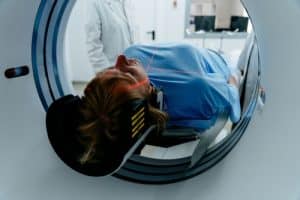What are brain aneurysms?
Unruptured vs ruptured aneurysms
Unruptured aneurysms do not necessarily show symptoms unless they are larger. They can put pressure on the brain’s nerves and tissues. Some symptoms include:
- Pain behind the eye
- Double or blurry vision
- Numbness
- Paralysis on one side of the face
The full body MRI scan is generally highly accurate in detecting unruptured brain aneurysms.
When an aneurysm ruptures, patients will feel an instant headache. This is when the blood spills from the bulge and into the surrounding areas. In addition, a patient may also experience:
- Seizures
- Nausea
- Vomiting
- Sensitivity to light
Aneurysms can be diagnosed through medical imaging scans and other analyses. An MRA (Magnetic Resonance Angiogram), CTA (Computed Tomography Angiography), CSF (Cerebrospinal Fluid) analysis or an Angiogram can be used to diagnose aneurysms.
The MRA works similarly to a full body MRI scan but focuses specifically on the arteries in the brain rather than the entire body. It can reveal if there has been any bleeding in the brain and can also identify the presence of an aneurysm.
A CTA is also the same as a CT scan, but uses a contrast dye to look for aneurysms within the brain. It provides a sharper image to help catch any bleeding in the brain compared to a regular CT brain scan.
Fluoroscopic-guided catheter angiography is another test to detect aneurysms in the brain. CSF analysis uses a spinal tap to collect cerebrospinal fluid to test for the presence of blood. If present, additional testing is required, most likely in the form of a CTA or MRA.
Works
Cerebral Aneurysms Fact Sheet | National Institute of Neurological Disorders and Stroke (nih.gov)
Brain Aneurysm: 4 Things You Need to Know | Johns Hopkins Medicine







